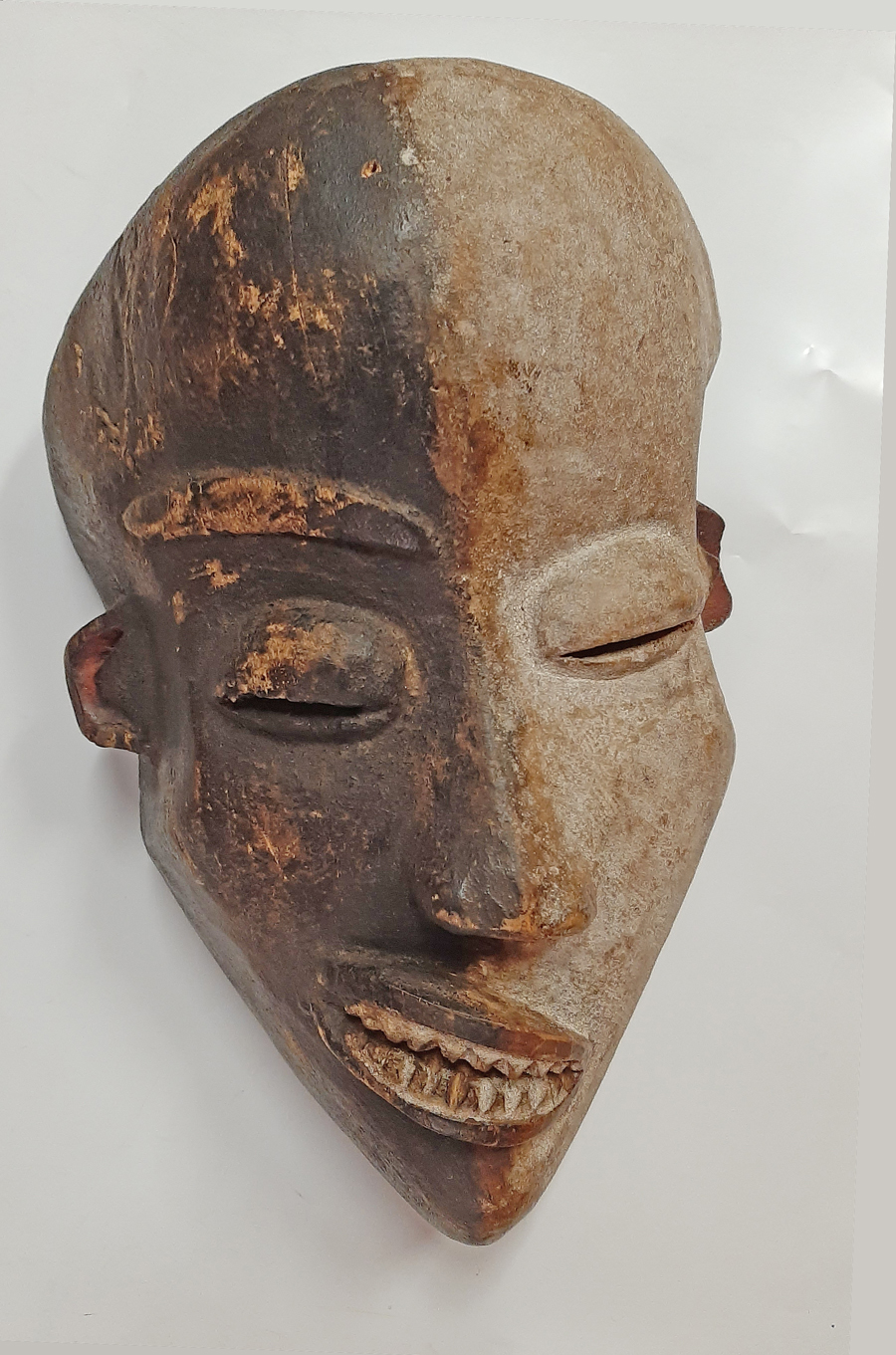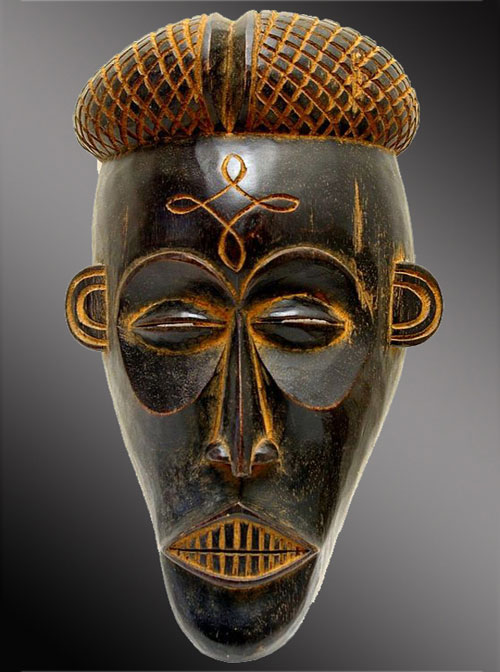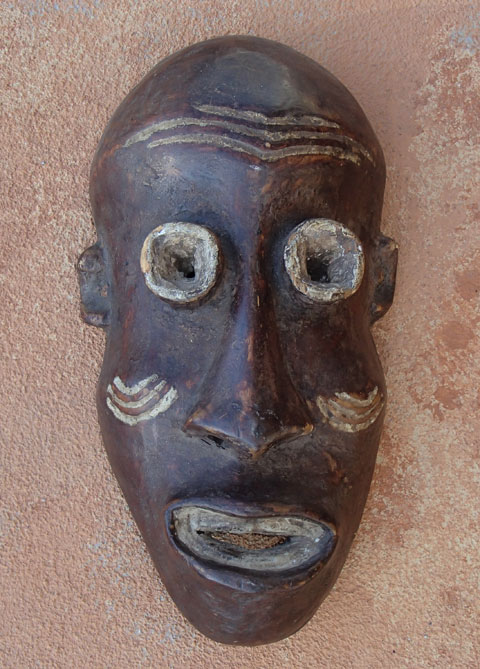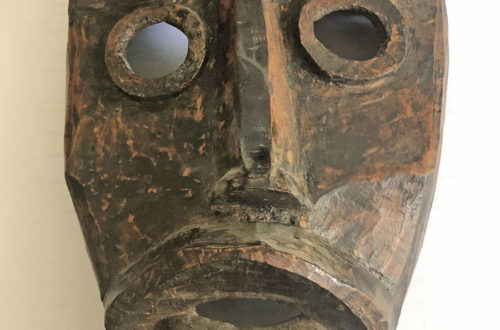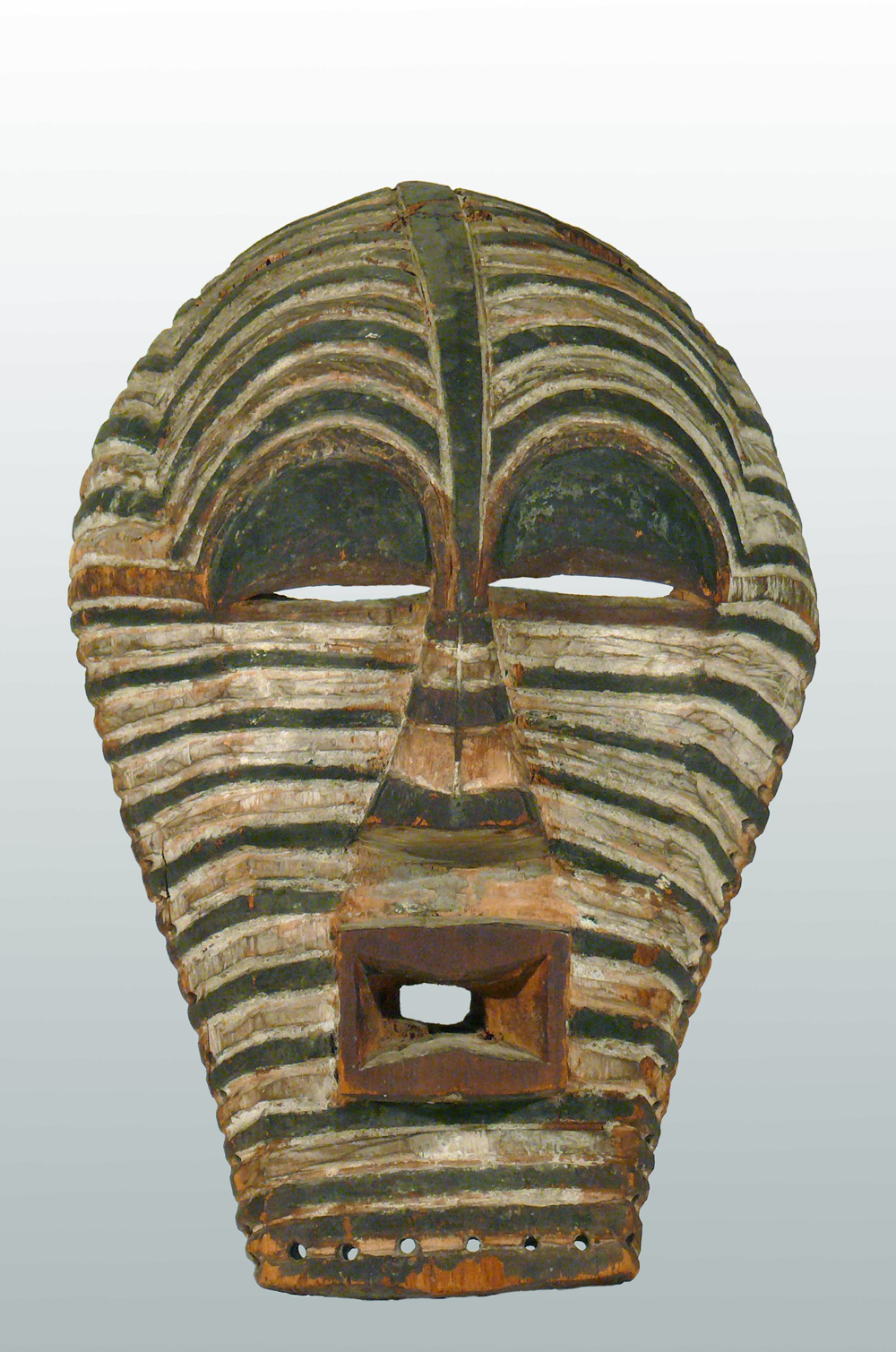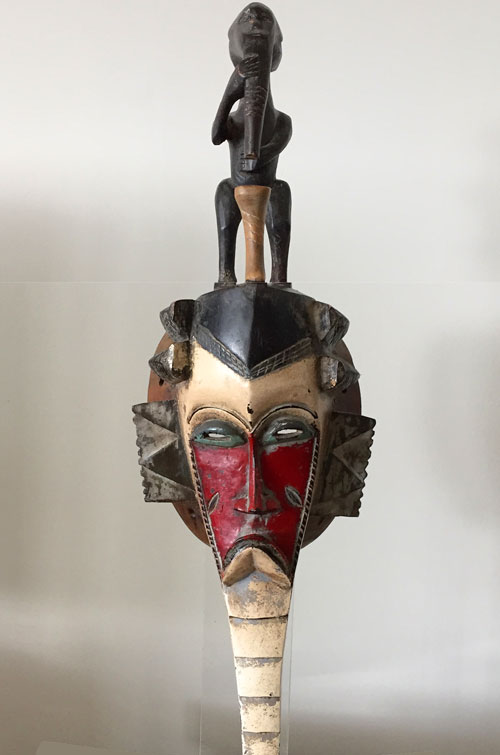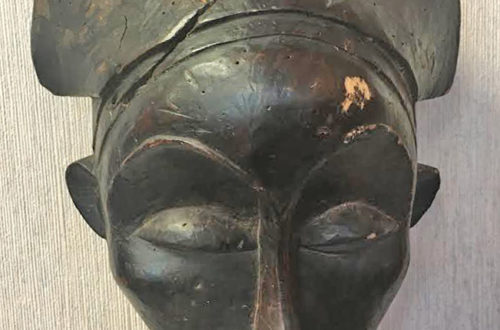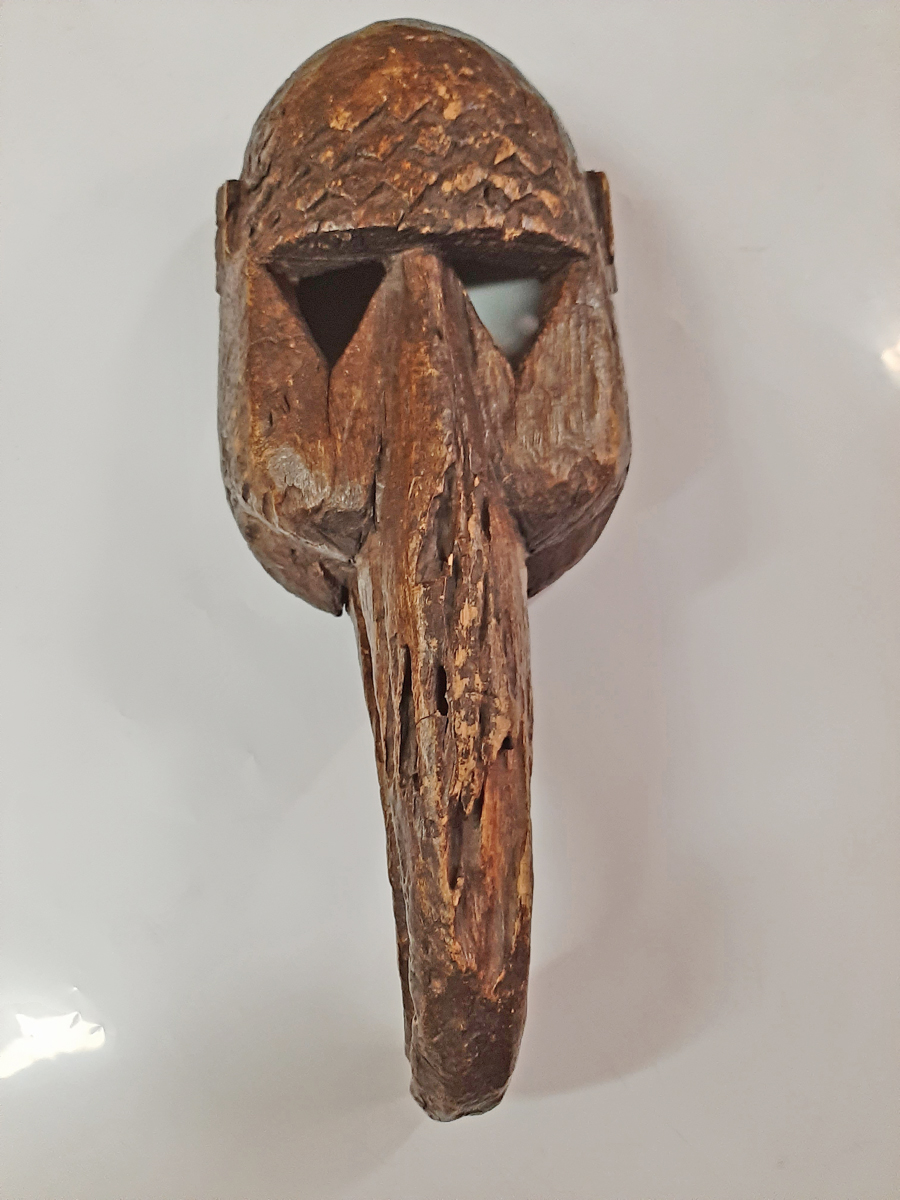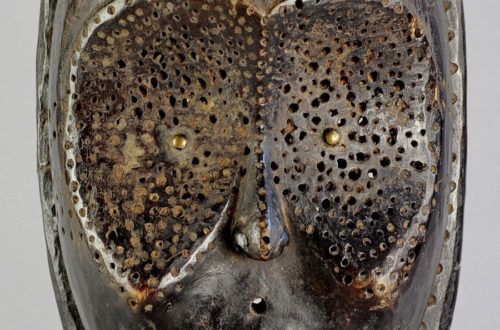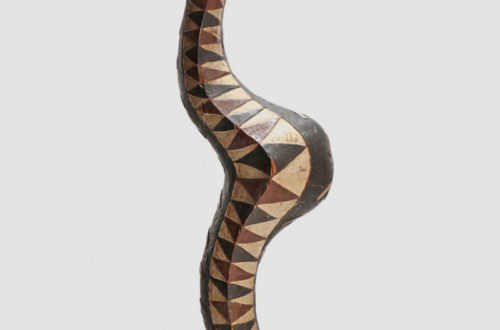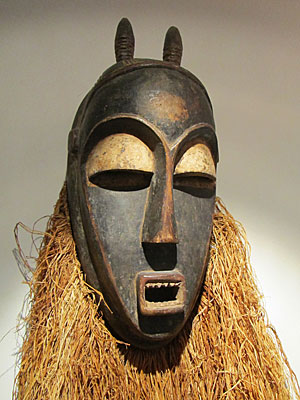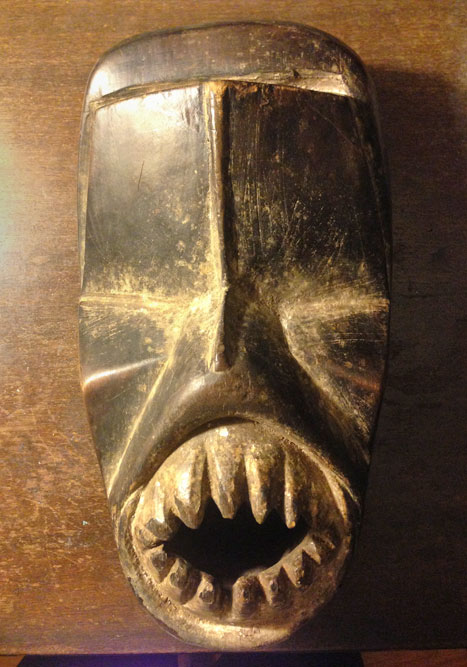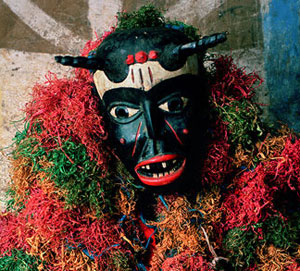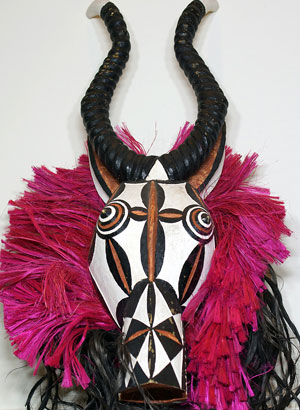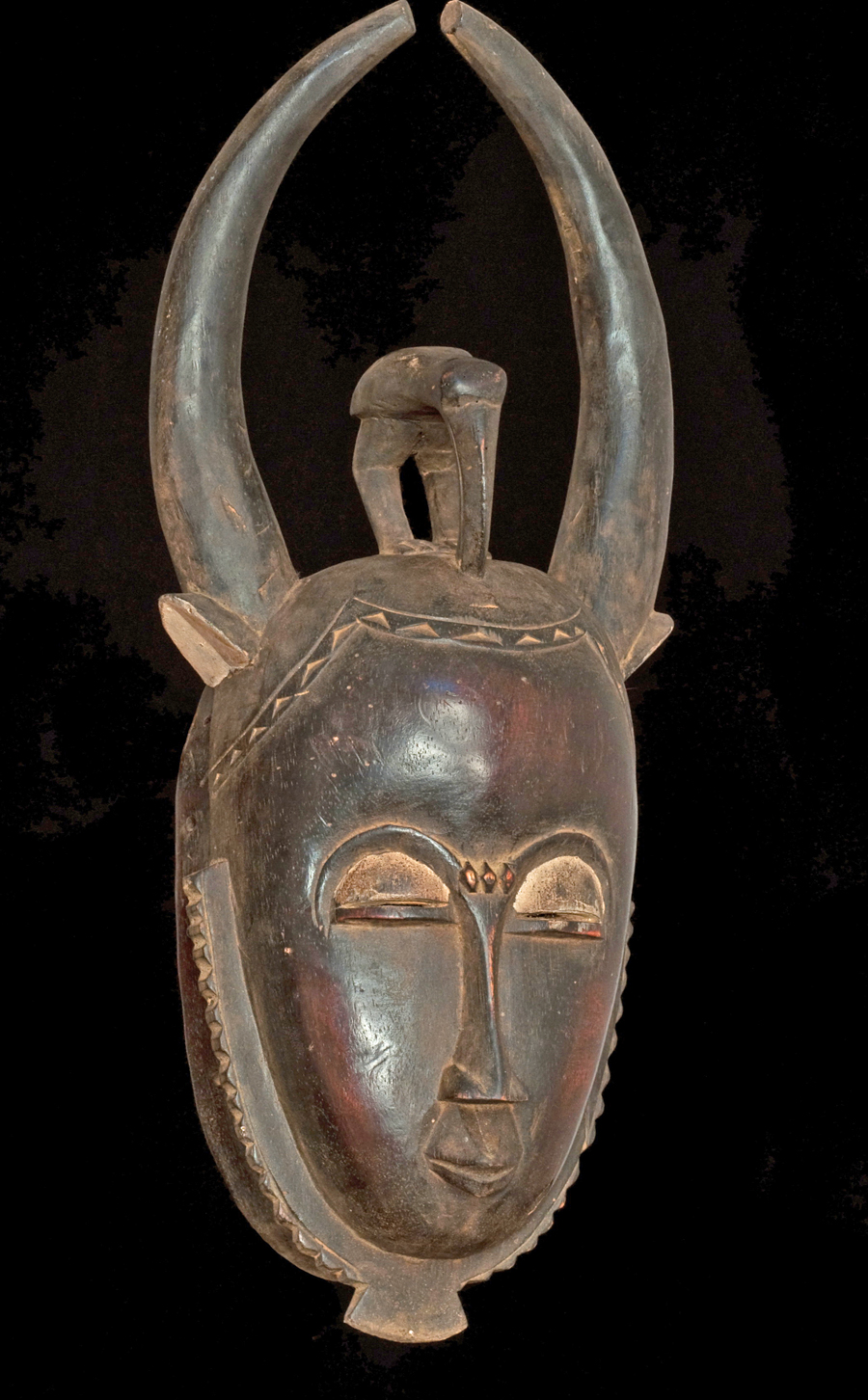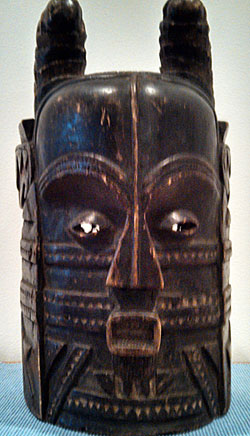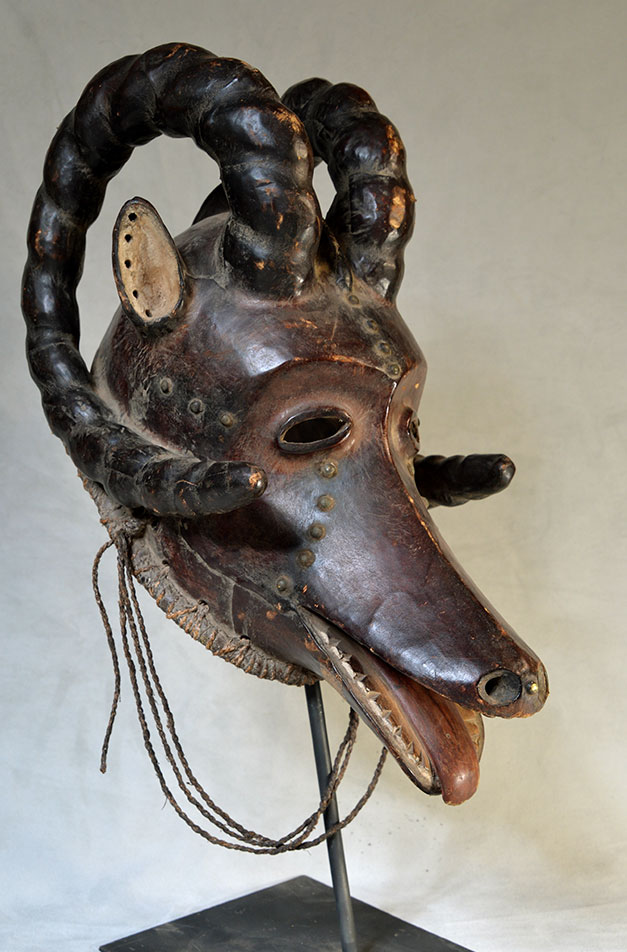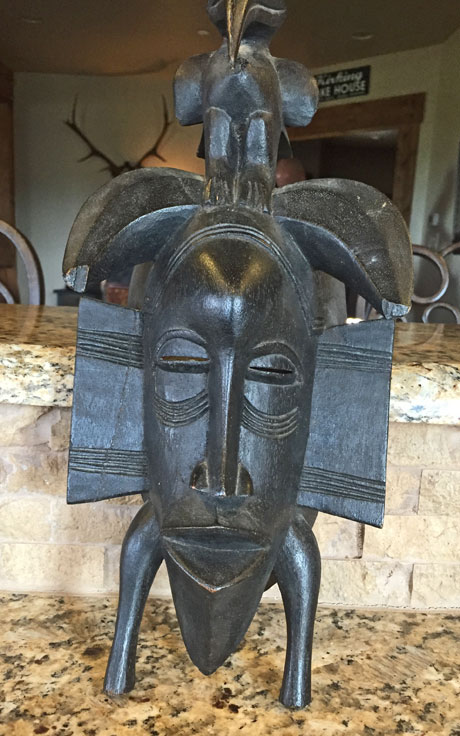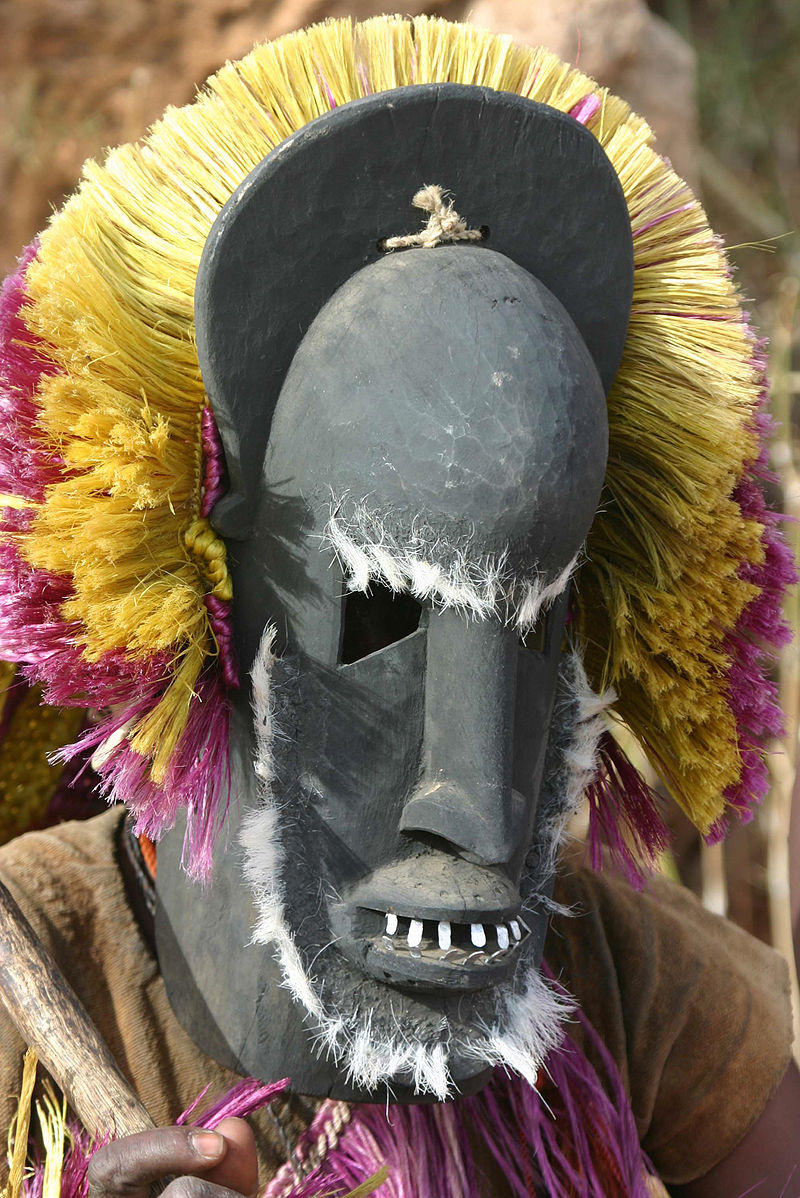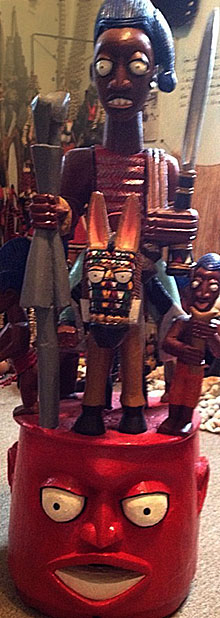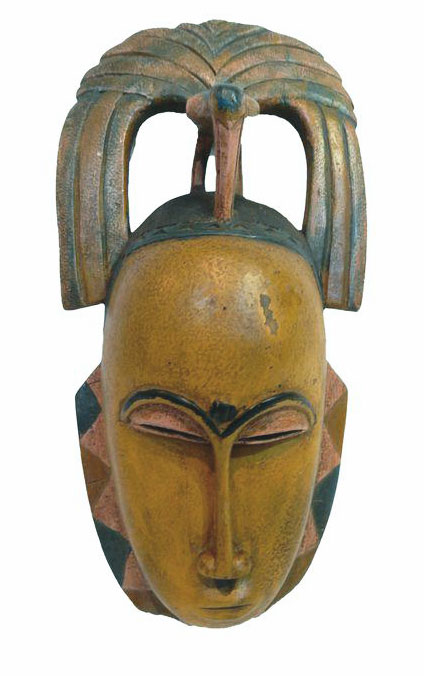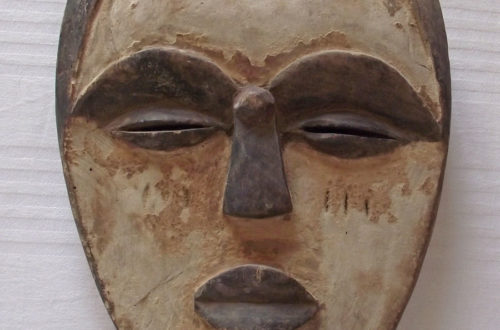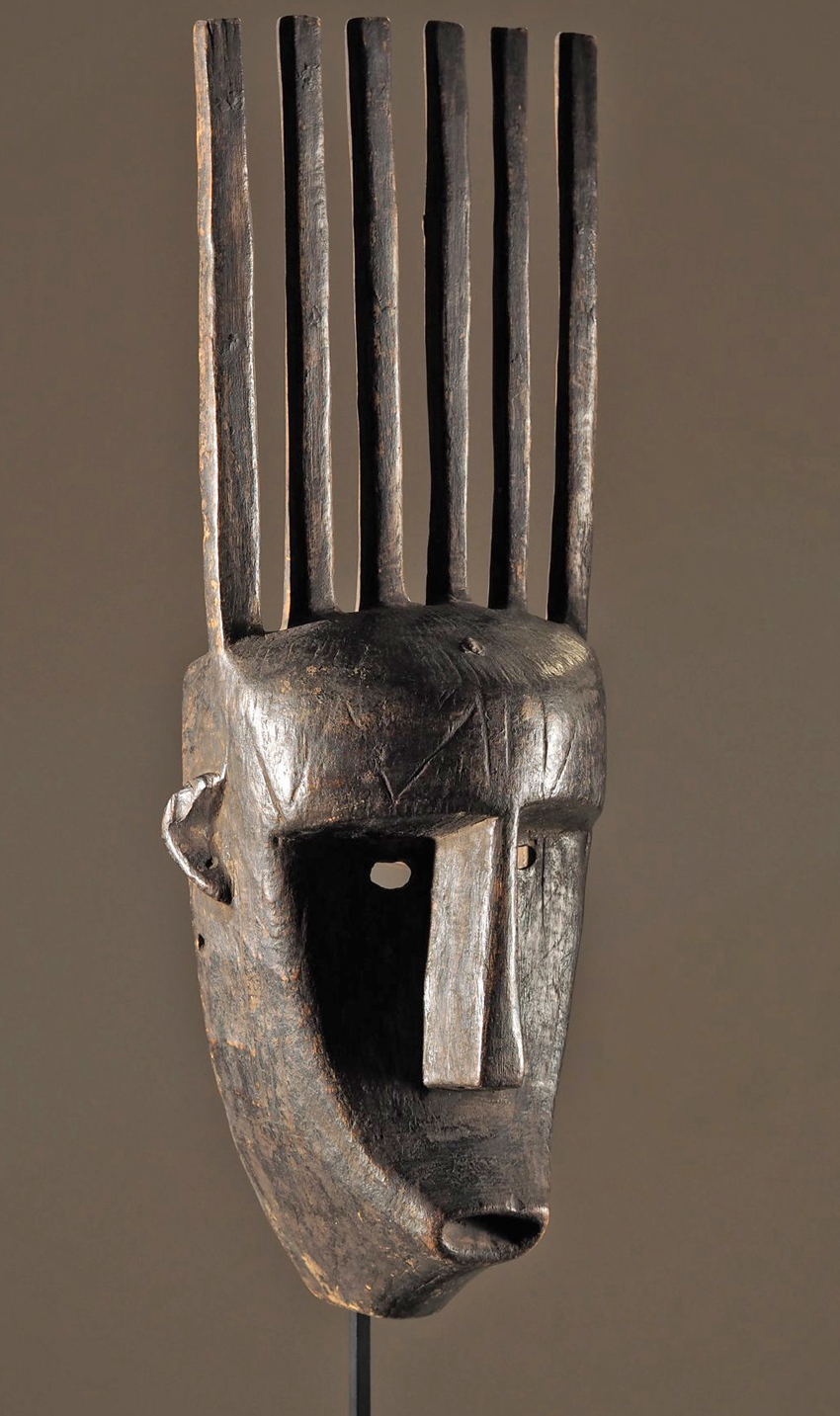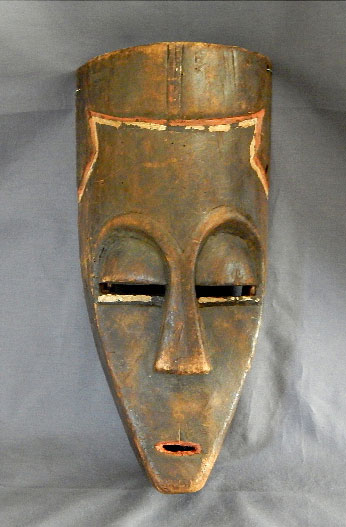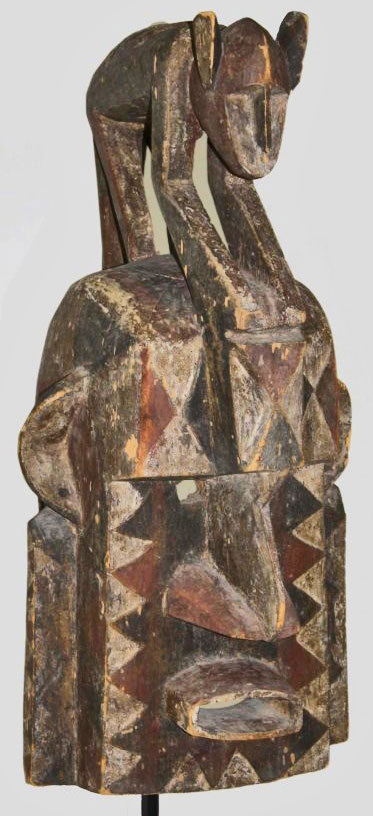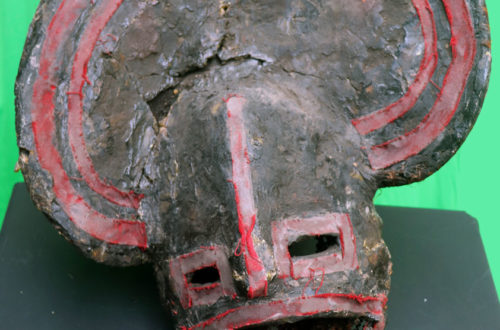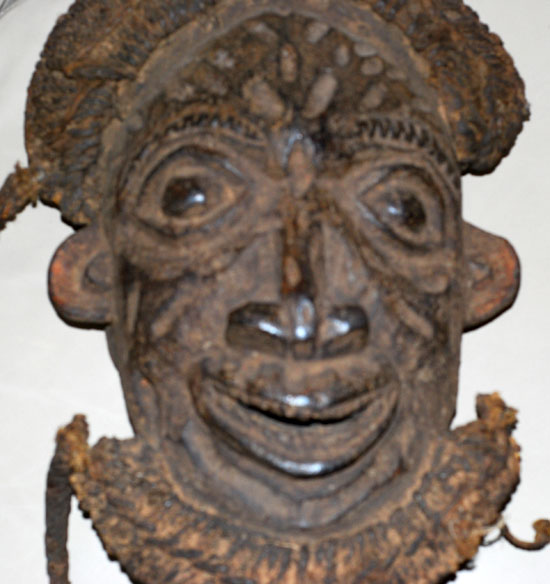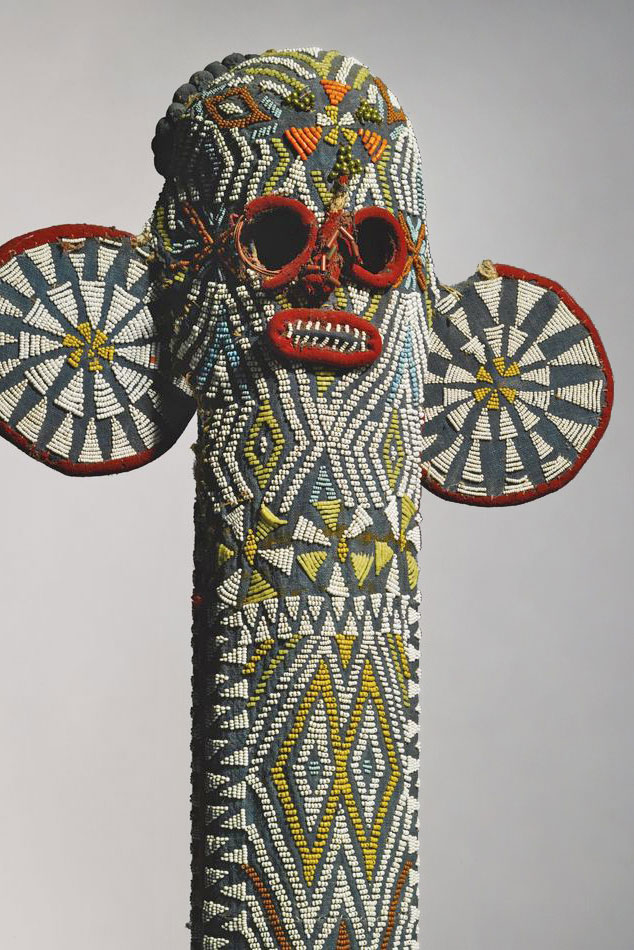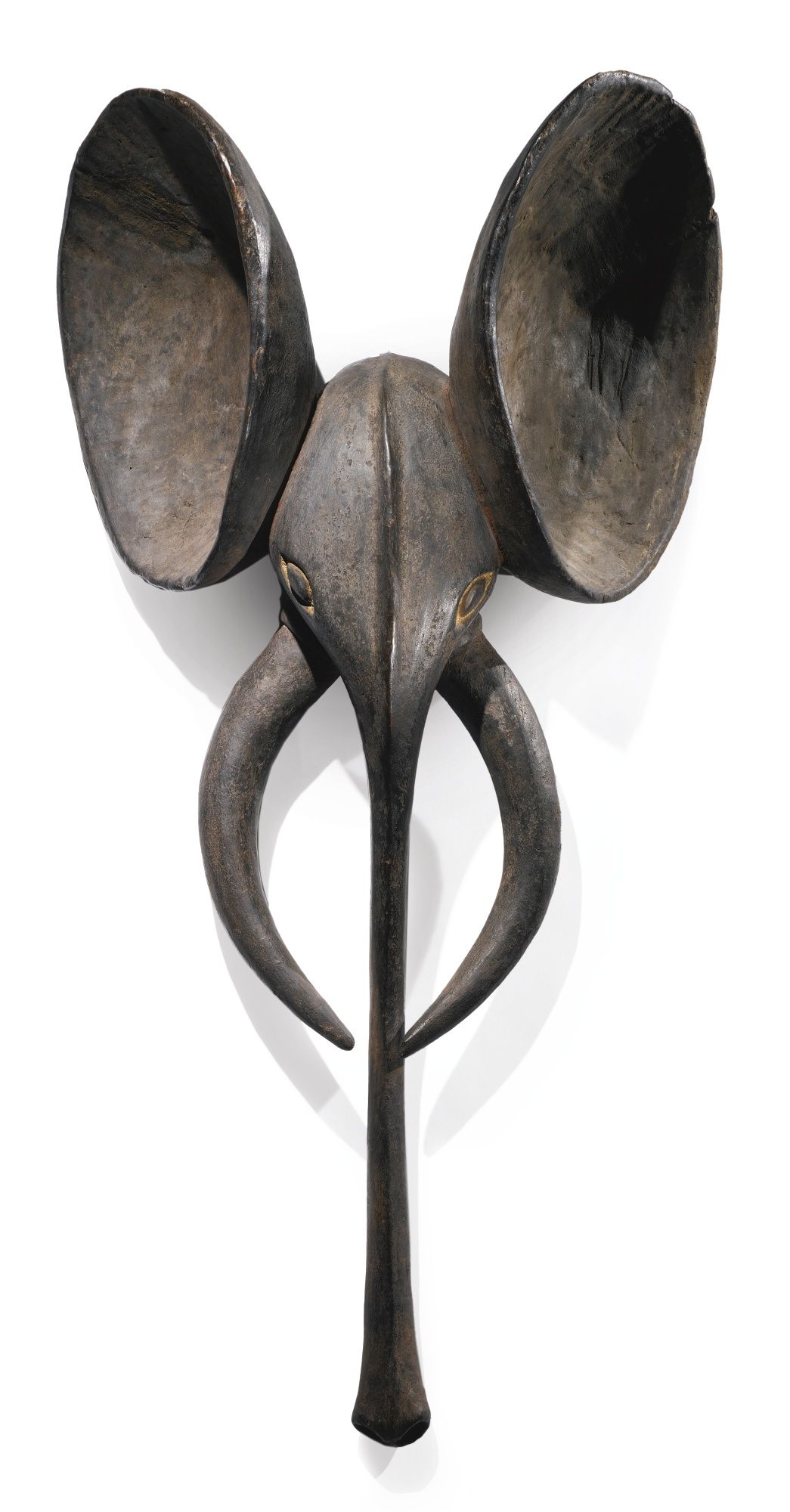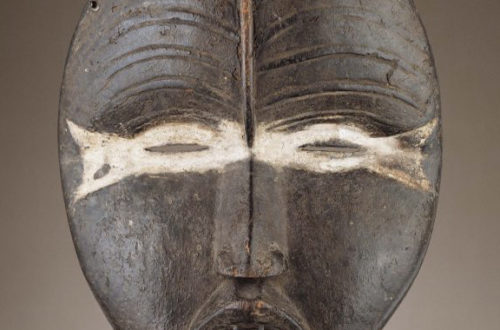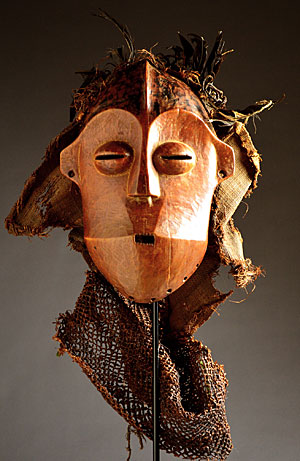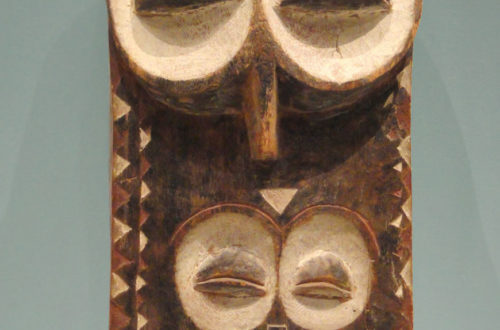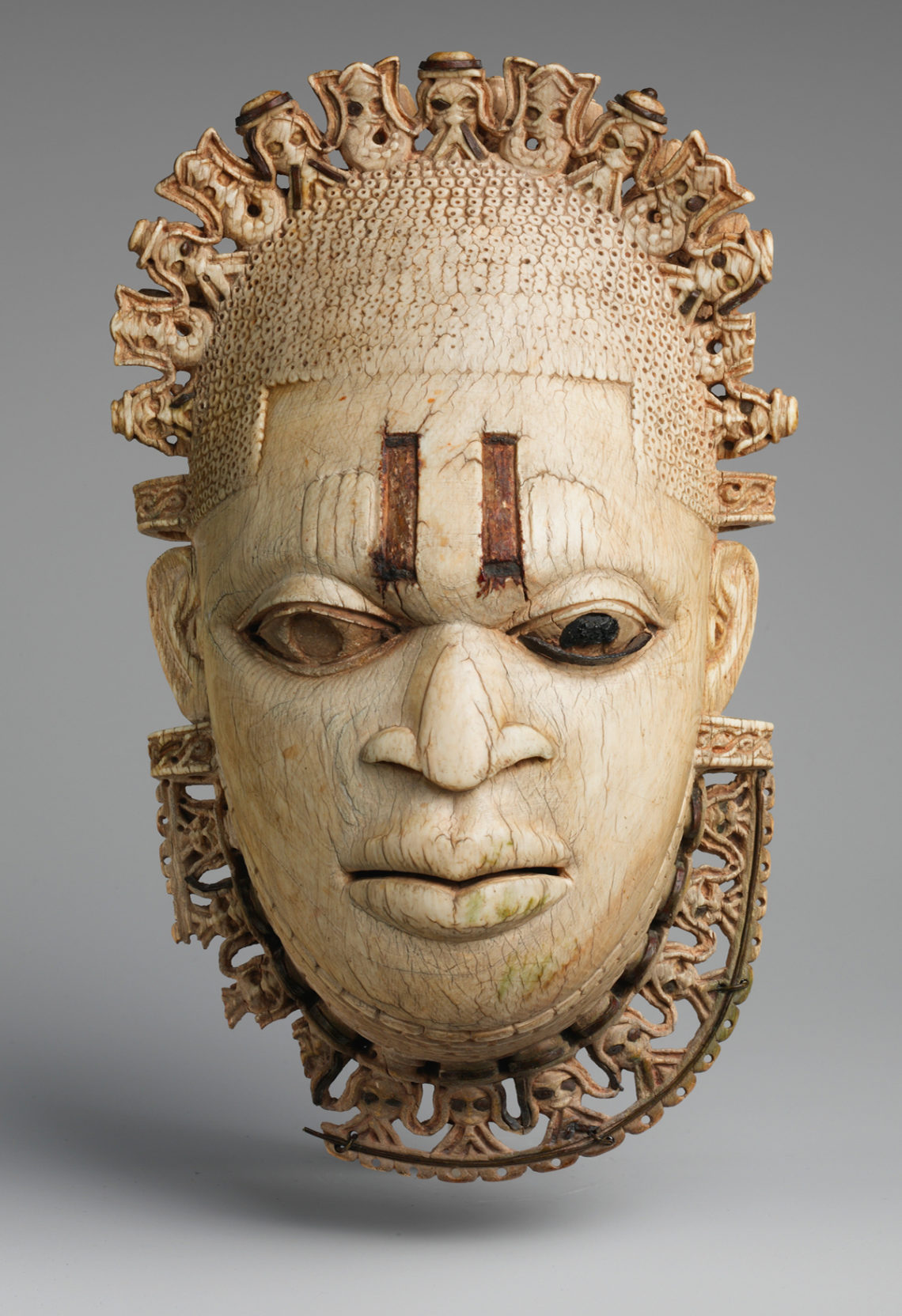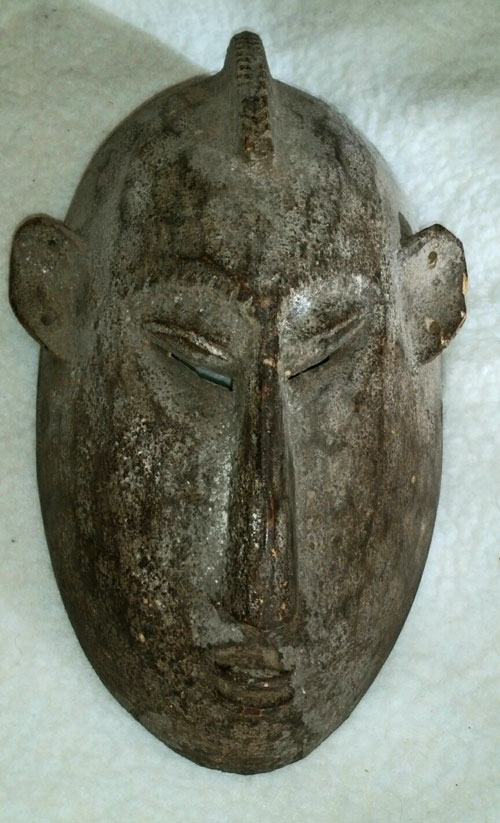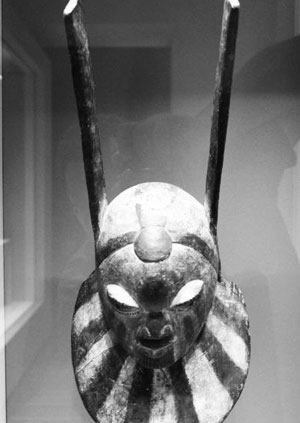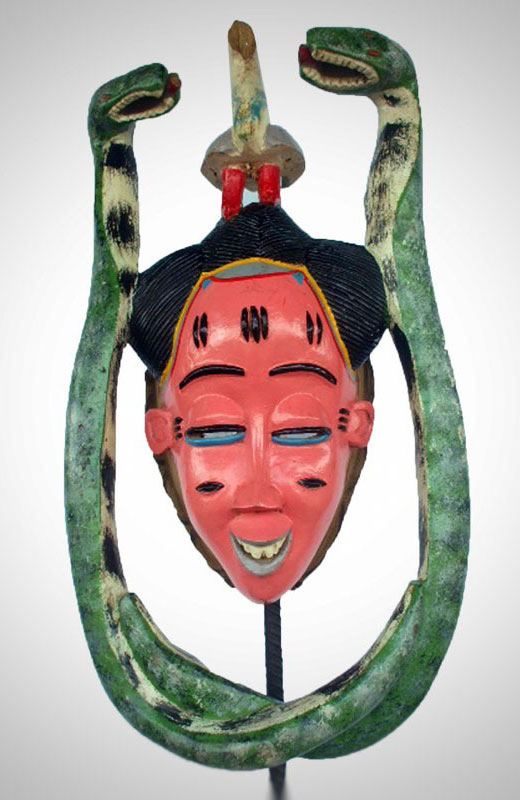Q: Here you will find the second mask ‘black and white’. With my best regards. Eduard, 1729 A: It would have been nice if he would have furnished more info such as size, who, when and how much. I’m posting it, along with two different Pende deformity masks, because they are so interesting. There are also a few other places in the world where deformity masks are used in masquerade. Here is some information from the Canadian Museum of History. The mask comes from the Central Pende region in the Bandundu province, in the southern part of the Democratic Republic of the Congo. It falls into the category of mbuya…
-
-
Kefwebe mask for a museum
Q: I purchased this Kifwebe mask from the photographer Berenice Abbott in 1990. She said that she traded photographic work for it with an African art dealer in New York in 1932. I have been asked to loan it for an exhibition and it would be helpful if I could supply the museum with some information about its origin. I am not looking to sell the mask. Todd, 1728 A: Of course, your mask made by the famous Songye tribe in the Democratic Republic of the Congo. The following description comes from Rand African Art. You can find many more scans and copy with the aid of Google. This Kifwebe…
-
New fake of Dan bird mask
Q: A good friend of mine is selling his collection of antiques because unfortunately he has to be admitted to a care home because of his advanced age. He offers me this ‘bird mask'(see attached photos). I like beautiful, old things. I am not an expert on masks at all. It does not seem to me to be a product for the tourists, but to be tribal, ceremonial and ‘old’. Can you help me with the determination and how much can I spend without paying too much? For the time being, I cannot provide you with additional information other than these photos. Eduard, 1727 A: Similar “old masks” have been…
-
Masks from Sierra Leone
Sierra Leone is one of the smallest countries in Africa and yet it has a large impact on curators and collectors of masks. The Mende and Temne people who live their are strong in art and culture, especially with masquerade. They are the two largest ethnic groups. Two of the photos you see here are Jolies used for parades, especially in the capitol of Freetown by the popular Ode-Lay Society. They can be very elaborate, but others are much simpler and less expensive. The black helmet-style mask is worn by girls passing into adulthood at a Sande Society ceremony. The mask is called a Bundu. To the best of my…
-
Unpainted Gu mask from Ivory Coast
We recently posted a fully painted one which you can see by going to– https://dev.masksoftheworld.com/gu-mask-from-west-africa/ Actually, this “unpainted” one has a little white paint. It is well made and beautiful. I don’t know if this dark brown one is authentic or a reproduction. If the latter, most of us could afford it. The photo was taken by Roman Bonnefoy. Here is some information on African masks for beginners… Ritual and ceremonial masks are an essential feature of the traditional culture and art of the peoples of Sub-Saharan and West African. While the specific implications associated to ritual masks widely vary in different cultures, some traits are common to most African…
-
More on African masks
The Mask Man: The first photo was shot at a Dogon village ceremony, the second one is a recently made fake. Authentic African masks are found in museums and high-end galleries– not at local auctions and yard sales. I Googled “African tribal masks” and looked carefully at about 300 images. Only 16 were authentic! I wasn’t too surprised. The Mask Man has been looking at photos of mystery masks sent in to this website for almost 20 years. I answer all of the emails but only post about 10% nowadays. As I have said before, if you buy a mask in Africa or anywhere else, assume it was made for…
-
Ntomo masks from Mali
Masks are appealing because of how the look… and what they tell us about a culture. A young woman who majored in psychology wrote this paper in college. I hope you enjoy it. The Bamana are a large and powerful ethnic group in Mali, West Africa. Both Islamic and traditional religious views are entwined in Bamana culture. The political structure is patrimonial, meaning positions are inherited and handed down through the male side of the family. Political leaders also control the group’s religious arrangement. Adulthood is earned through the process of six major initiation societies, collectively called the jow, which are used as both a religious and educational system. Bamana…
-
Gu mask from West Africa
Q: I bought this mask 7 years ago thru a fundraising auction for a cultural organization in So. Calif. The mask was donated to the auction by a member and was described simply as an African mask. My basic research indicates that it may be from the Baule people of the Ivory Coast and is a Mblo or portrait mask. I don’t think it’s very old, possibly less than 40 years. It measures approx. 21″ high and 8″ wide. Can you tell me if it is in fact a Baule Mblo mask? Thanks for your expertise! Scotty, 1709 A: You are almost right. The Baule and Guro people are located…
-
Babanki elephant mask from Cameroon
Q: I purchased this mask about 11 years ago while on a study abroad trip in South Africa. Specifically, it was purchased in a shop that dealt in mask. I believe the town was just north of Johannesburg. I’m not sure exactly how much I payed but probably in the neighborhood of $100US. The shop included a label on the back stating it origin (Guru tribe of Ivory Coast) and purpose (royal mask- “A symbol of power for the king exclusively”). It also noted the age to be around 80 years. I don’t know how much of this is accurate. The mask is made of wood and measures approximately 31…
-
Africa’s greatest mask
This Benin ivory mask is a sculptural portrait in ivory of Idia, (Queen Mother) of the 16th century Benin Empire. Two almost identical masks are kept at the British Museum in London and at the Metropolitan Museum of Art in New York City. Both feature a serene face of the Queen Mother wearing a beaded headdress, a beaded choker at her neck, scarification highlighted by iron inlay on the forehead, and all framed by the flange of an openwork tiara and collar of symbolic beings, as well as double loops at each side for attachment of the pendant. There are also examples on the same theme at the Seattle Art…
